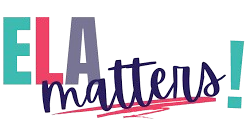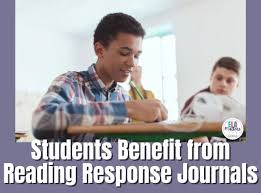Writing as a response to reading benefits students in several ways. It allows them to reflect on the ideas presented in text, become familiar with patterns in language, and share opinions about what they’ve read.
When I first introduced reading response journals, it was out of a need to replace the traditional reading log and provide students an outlet to express themselves in a purposeful way. Response journals told me so much more about students’ understanding of the text. I found it also eliminated the chance of plagiarism.
The Goal of Response Journals
I wanted my students to read like a writer with the ultimate goal of strengthening their language skills and exposing them to a variety of sentence structures, writing patterns, and vocabulary. Mary K. Tedrow, author of Write, Think, Learn: Tapping the Power of Daily Student Writing Across the Content Area, says,
“Writing and reading are intricately intertwined. One is the inverse of the other: Reading is the inhale; writing is the exhale. They depend on each other, and when we find time to practice both, the students are the winners.”
Response journals offered students in my class the opportunity to think about their thinking and respond appropriately to questions. I asked them to use textual evidence and reflection to support their writing. It became clear that when they wrote out their personal thoughts, opinions, reactions, connections, and questions, the result was better comprehension and a deeper understanding of the text and author’s craft. I used the journals to gain insight, chart their growth in writing, and plan future learning experiences.
Getting Started with Response Journals
To begin, I divided response questions into fiction and nonfiction. Then I created task cards and Tic Tac Toe boards. My students wrote about their reading each week by choosing three different question stems and using a specific framework. Some example questions were:
- If you could give the character one piece of advice, what would it be?
- What part of your reading surprised you or presented a new way to think about the topic?
- What new information did you gain from the reading?
Another way I incorporated writing to respond was in my reading groups. During literature circles, students met and talked about their reading. They used the question stems as a guide to facilitate their discussion. Students then picked one question to respond to using information gathered from the group talk.
Grading Student Response Writing
You might be thinking that writing as a response to reading is a great idea but are hesitant to get started because you aren’t comfortable assigning a grade to something so personal. By using a specific grading rubric, I was able to identify areas I wanted to target, which made assessment much quicker and easier.
Students chose three questions to answer in each journal entry. I evaluated their responses based on their ability to answer the question and support the answer with valid textual and/or personal evidence. At times, I also included grammar, usage, and mechanics skills I wanted my students to focus on. When I assessed the journals from that perspective, it was much easier than assigning a random, subjective grade.
Depending on my plans, I would grade the journals once a week, twice per grading period, or once near the end of the grading term. I even asked students to evaluate one of their own entries and give feedback to peers for a grade. You have a lot of flexibility when setting up your assessment options.
Overall, I found the reading response journal to be an effective way to keep students writing and give them the opportunity to process what they were reading. When my students were required to read long passages and interact with the text to answer questions, they had plenty of practice to be successful.

